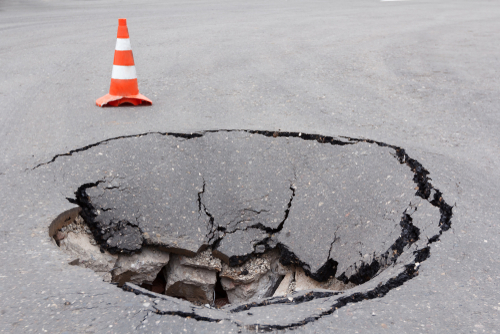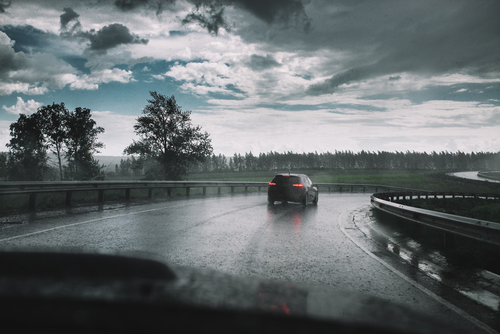Most Dangerous Roads in the South Carolina Lowcountry
At McDougall Law Firm, we are dedicated to serving the people of Beaufort and the South Carolina Lowcountry. Our team has decades of experience handling car accident claims and other personal injury cases across the region. We know the roads, the communities, and the challenges that residents and visitors face. As a dedicated firm, we are committed to standing up for our clients, protecting their rights, and helping them recover the compensation they need after a serious crash.
The South Carolina Lowcountry is a cultural region located in the southeastern United States, known for its historic homes, Civil War landmarks, salt marshes, and world class golf courses. Visitors come to explore downtown Beaufort, Hilton Head Island, Kiawah Island, and the Sea Islands, but these same roads that connect rich history and natural beauty are also some of the most dangerous roads in the state. Crashes on highways like US 278, Highway 17, and I-95 are common, often leaving victims with serious injuries.
At McDougall Law Firm, our Beaufort car accident lawyers help residents and visitors understand these risks and protect their legal rights after an accident.

Why the Lowcountry Has Some of the Most Dangerous Roads
The South Carolina Lowcountry is a region known for its natural beauty, historic homes, and cultural heritage. It is also a place where many of the most dangerous roads in South Carolina are located. Several factors make these roads risky for both residents and visitors.
Geography and Development
The Lowcountry is a geographic and cultural region located in the southeastern United States. It is characterized by salt marshes, plantations, and historic sites. Rapid residential and commercial development in towns like Bluffton, Beaufort, and Charleston has increased traffic volumes faster than roads were designed to handle. This growth has made some routes congested and hazardous.
High Traffic Destinations
The region attracts millions of visitors each year to Hilton Head Island, Kiawah Island, and downtown Beaufort. People travel for world class golf courses, beaches, and fishing. This steady flow of residents and visitors places heavy demand on highways like US 278 and US 21, which see frequent congestion and accidents.
Historic Roadways
Many of the Lowcountry’s roads were first designed centuries ago, long before modern traffic needs. Routes that once led to plantations or Civil War battle sites now serve as main arteries for daily commuters. Narrow lanes, sharp curves, and limited visibility create higher risks on these older roads.
Legal Context in South Carolina
South Carolina laws highlight how dangerous behaviors increase crash risks. Speeding violations are addressed in S.C. Code Ann. § 56-5-1520, while impaired driving is prohibited under S.C. Code Ann. § 56-5-2930. These statutes often come into play on Lowcountry highways where speeding and drunk driving are leading causes of accidents.
The Most Dangerous Roads in the South Carolina Lowcountry
The South Carolina Lowcountry is rich in history, culture, and natural beauty, but several highways and routes in this region are among the most dangerous roads in the state.
US Highway 278: Hilton Head Island and Bluffton Corridor
US 278 is one of the busiest routes in the Lowcountry. It connects Bluffton and Hilton Head Island, two of the most visited areas in South Carolina. Heavy traffic from residents, tourists, and resort visitors creates frequent congestion. Many crashes occur as drivers head to beaches, world class golf courses, and historic sites.
Highway 170: Beaufort to Bluffton
Highway 170 links historic Beaufort with the rapidly growing town of Bluffton. The road passes through salt marshes and natural areas, but it has narrow lanes and sharp curves. Tourists visiting plantations, museums, and downtown Beaufort often share this route with commuters, which increases accident risks.
Interstate 95: Crossing the Lowcountry
Interstate 95 runs north to south through the Lowcountry and is one of the busiest highways in the southeastern United States. It carries a mix of passenger vehicles and commercial trucks. High speeds, long travel times, and heavy freight traffic make this interstate a common site for serious crashes.
Highway 17: Charleston to Savannah Stretch
Highway 17 is a scenic route connecting Charleston with Savannah. Drivers pass through historic towns, rice plantations, and cultural heritage sites. Despite its beauty, Highway 17 has dangerous sections with limited visibility, wildlife crossings, and traffic from both residents and visitors.
US Highway 21: Downtown Beaufort into the Sea Islands
US 21 begins in downtown Beaufort and runs through the Sea Islands. This route is tied to Lowcountry history, including Civil War landmarks and the legacy of the slave trade. Today it is heavily traveled by residents, students at the University of South Carolina Beaufort, and visitors heading to beaches, fishing areas, and historic homes. The high demand and narrow sections of road contribute to frequent collisions.
Contributing Factors to Crashes on Lowcountry Roads
Crashes on the most dangerous roads in the South Carolina Lowcountry often result from a mix of driver behavior, road design, and environmental conditions.
Speeding and Reckless Driving
Speeding is one of the leading causes of collisions in the Lowcountry. Many highways such as US 278 and Highway 17 are long stretches where drivers often ignore posted limits. Under state law, exceeding speed limits is a violation, and reckless driving on these busy corridors increases the likelihood of severe crashes.
Impaired Driving
Driving under the influence remains a serious problem on Lowcountry roads. Visitors enjoying nightlife in Charleston or residents returning from events on Hilton Head Island may drive while impaired. S.C. law makes impaired driving illegal, yet it continues to be a factor in deadly wrecks.
Distracted Driving
Tourists and residents alike contribute to distracted driving accidents. Many drivers use mobile phones for maps while traveling to beaches, museums, and downtown Beaufort. Even brief distractions on congested routes like Highway 170 or US 21 can cause rear-end collisions and dangerous lane changes.
Tourist Traffic
The Lowcountry is a cultural region located in the southeastern United States that attracts millions of visitors each year. Out-of-town drivers are often unfamiliar with narrow lanes, sharp curves, and confusing intersections. Tourist traffic adds stress to already crowded highways near plantations, historic homes, and cultural heritage sites.
Road and Weather Conditions
Some roads in the Lowcountry were built centuries ago to connect plantations and towns. Aging infrastructure, poor lighting, and limited shoulders make these roads less safe for modern vehicles. Flooding from salt marshes and heavy rains also reduces visibility and increases crash risks in Beaufort, Charleston, and the Sea Islands.
Safety Tips for Navigating the Most Dangerous Roads
Drivers in the South Carolina Lowcountry can reduce their risks by following simple safety measures when traveling on the region’s most dangerous roads.
Plan Travel Times Carefully
Traffic peaks during the summer and around holidays when visitors flood Hilton Head Island, Kiawah Island, and downtown Beaufort. Planning trips during off-peak hours helps drivers avoid congestion and reduces the chance of accidents on US 278, Highway 170, and other busy routes.
Obey Speed Limits
Highways such as I-95 and Highway 17 encourage drivers to exceed posted limits, but speed remains a primary factor in severe collisions. Following speed restrictions protects both residents and visitors as they travel through the Lowcountry.
Stay Alert Around Commercial Trucks
Interstate 95 carries a large volume of freight traffic across the southeastern United States. Drivers should maintain safe following distances, avoid blind spots, and expect sudden lane changes when sharing the road with tractor trailers.
Minimize Distractions
Distracted driving is a major contributor to crashes near historic sites, beaches, and museums. Drivers should avoid using mobile phones or adjusting GPS devices while on narrow lanes or at busy intersections in Beaufort, Charleston, or the Sea Islands.
Adjust for Road and Weather Conditions
The Lowcountry is characterized by salt marshes and coastal weather that can create slippery conditions. Heavy rain or flooding reduces visibility on older roads such as US 21. Slowing down and using headlights in poor conditions lowers the risk of collisions.
Legal Rights After an Accident on South Carolina’s Most Dangerous Roads
Victims injured on the most dangerous roads in the South Carolina Lowcountry have specific legal rights under state law that protect their ability to seek compensation.
Compensation for Damages
A person injured in a crash may pursue compensation for medical expenses, lost wages, pain and suffering, and property damage. These claims apply to both residents and visitors injured while traveling through Beaufort, Hilton Head Island, Charleston, and the Sea Islands.
Comparative Negligence Rule
South Carolina follows a comparative negligence system under S.C. Code Ann. § 15-38-15. An injured party can recover damages if they are less than 51 percent at fault for the accident. For example, if a driver is found 20 percent responsible, their compensation will be reduced by that percentage.
Common Violations Leading to Claims
Many accidents on roads such as US 278, Highway 17, and I-95 involve speeding, reckless driving, or impaired driving.These violations often form the basis of liability in injury claims.
Role of a Beaufort Car Accident Lawyer
At McDougall Law Firm, our Beaufort car accident lawyers represent clients injured on dangerous Lowcountry roads. We understand the hazards of US 21, Highway 170, and I-95, and we know how South Carolina statutes apply to crash claims. Our team investigates collisions, gathers evidence, negotiates with insurance companies, and when necessary, pursues cases in court. We are committed to helping injured victims secure the compensation they deserve after an accident in the South Carolina Lowcountry.
Protect Your Rights After an Accident on the Most Dangerous Roads!
If you or a loved one has been injured on the most dangerous roads in the South Carolina Lowcountry, you do not have to face the aftermath alone. Our team at McDougall Law Firm has the experience and local knowledge to guide you through the legal process and fight for the compensation you deserve.
Contact us at 843-438-4386 today to discuss your case and protect your future!



